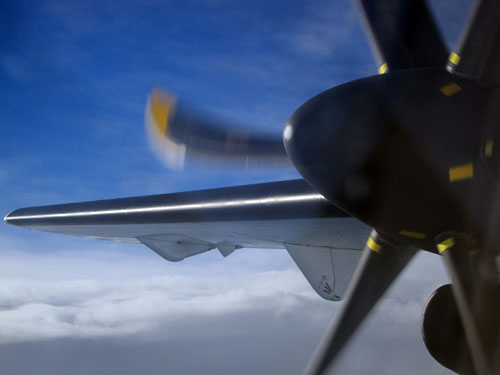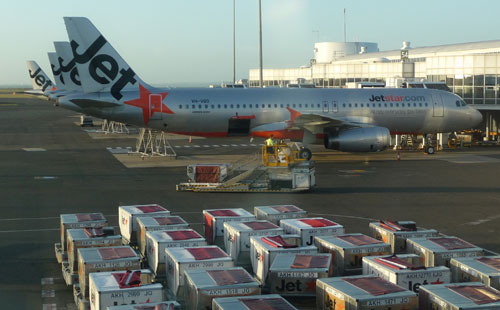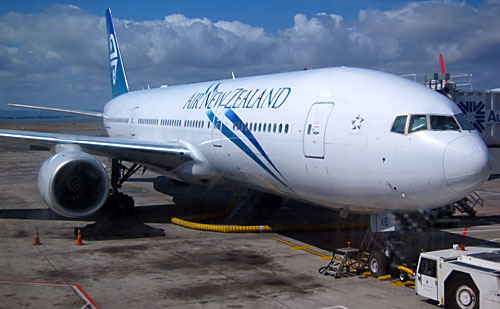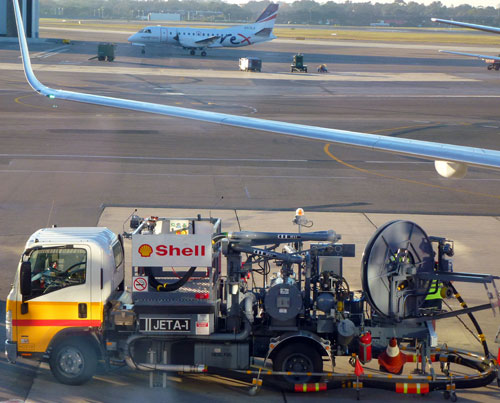The world has recently been focused on the last NASA Space Shuttle flight STS-135. Back on Earth the combination of cost cutting airlines and government obsession with security theatre is making flying frustrating and uncomfortable with pat downs and scans by customs agents and shrinking legroom on aircraft causing leg cramps.

We are at a key juncture point for the future of human aviation. The decisions made by governments and private corporations in the second decade of the 21st century will decide whether civil aviation will continue to be affordable and accessible in a post-carbon price world.
This blog post is an excerpt from an article I wrote about the Future of Space, Military and Civilian flight for GEARE Magazine. This part of the article was cut from the printed edition due to lack of space. I have added updates where new information is relevant.
Civil and Military Aviation
Although Qantas was founded as far back as 1920, according to the Australian Government’s Culture portal “civil aviation expanded rapidly after the Second World War due to the large number of trained military pilots. Military aircraft were converted for use as passenger craft, such as the popular DC3, and the two-airline policy was formed by the government.”

There wasn’t much competition and fares remained fairly high until 1990 when domestic airlines were deregulated allowing new entrants like Virgin Blue, Tiger Airways and Jetstar to push down fares, unfortunately with an accompanying loss of service and comfort.
Cheap domestic air travel between Australian cities and for overseas holidays is largely taken for granted these days but it’s a relatively recent phenomenon and not guaranteed to last past the next few decades because a carbon tax will be levied soon in Australia and the cost of aviation fuel will rise as supplies dwindle.
When it comes to our Airforce, controversy is raging over whether the decision to sign a contract for Lockheed Martin F-35 Lightning II international Joint Strike Fighters (JSF) is the best solution to replace our current Hornets and F-111s.
The Australian Defence Force says that the JSF is being developed as a fifth-generation, stealthy, multi-role fighter which will provide a common platform with our US and UK armed forces allies.
However considering that US Defence secretary Robert Gates sacked the program manager in late 2010 and cancelled one of the JSF variants, costs are set to blowout by billions of dollars and the Russian, Chinese and Indonesian airforces are likely to have superior aircraft it looks like this $16 billion (biggest ever defence purchase) by Australia could be a slow moving disaster.
On a longer term basis, the US Department of Defence is aggressively investing in ways to reduce their reliance on oil as a fuel for their vast fleet of aircraft as well as their vehicles and ships because of the immense cost in money, resources, and lives to transport fuel to war zones and bases around the world.
Airbus and Boeing

{{lls}}
Boeing and Airbus dominate the field of passenger aircraft and both have made great leaps forward in increasing the range and fuel efficiency of their aircraft.
Examples include the Boeing 787 Dreamliner which is 20% more fuel efficient than current planes of a similar size due to the use of composites in its structure, more-electric systems architecture, advanced aerodynamics and efficient new engines.
The popular Airbus A320 aircraft will soon have a new engine option called the A320neo which can achieve 15% fuel-savings when combined with large wing tip devices called Sharklets.
The Air Transport Action Group (ATAG) global association which represents all sectors of the air transport industry has promised to cap its net emissions at the 2020 level and halve net emissions levels by 2050 (compared to 2005 levels) despite massive growth in passenger numbers, especially in India and China.

However this relies on a somewhat optimistic hope that large volumes of low carbon biofuels will be available soon perhaps using fuels like Biobutanol, a close chemical relative of the fuel in butane cigarette lighters. This is uncertain though with the world’s population growing, amount of arable land falling and use of food crops to make biofuels already driving up the cost of staple foods.
Zeppelins Back From The Dead?
Mention the word Zeppelin and you’re likely to picture the fiery Hindenberg disaster. Fear not because modern Zeppelins use non-flammable Helium to make them buoyant and have a lightning proof surface layer.
The rising cost of aviation fuel has led to an increase in research and development to build next generation Zeppelin airships because of advantages such as only needing to burn fuel to move horizontally because Helium provides the lift and being able to land on virtually any terrain if equipped with hover cushion landing gear.
One example of Zeppelin use for tourism is Californian company Airship Ventures which runs aerial tours around San Francisco using their 75 metre long zeppelin Eureka that can carry up to 13 passengers and a crew of two in a comfortable and relatively quiet cabin large enough that passengers are encouraged to roam around.
Another is for military uses. The US Military is considering an airship idea called Blue Devil which could float in the skies above Afghanistan with lots of sensors recording data and a supercomputer to process it.


Leave a Reply